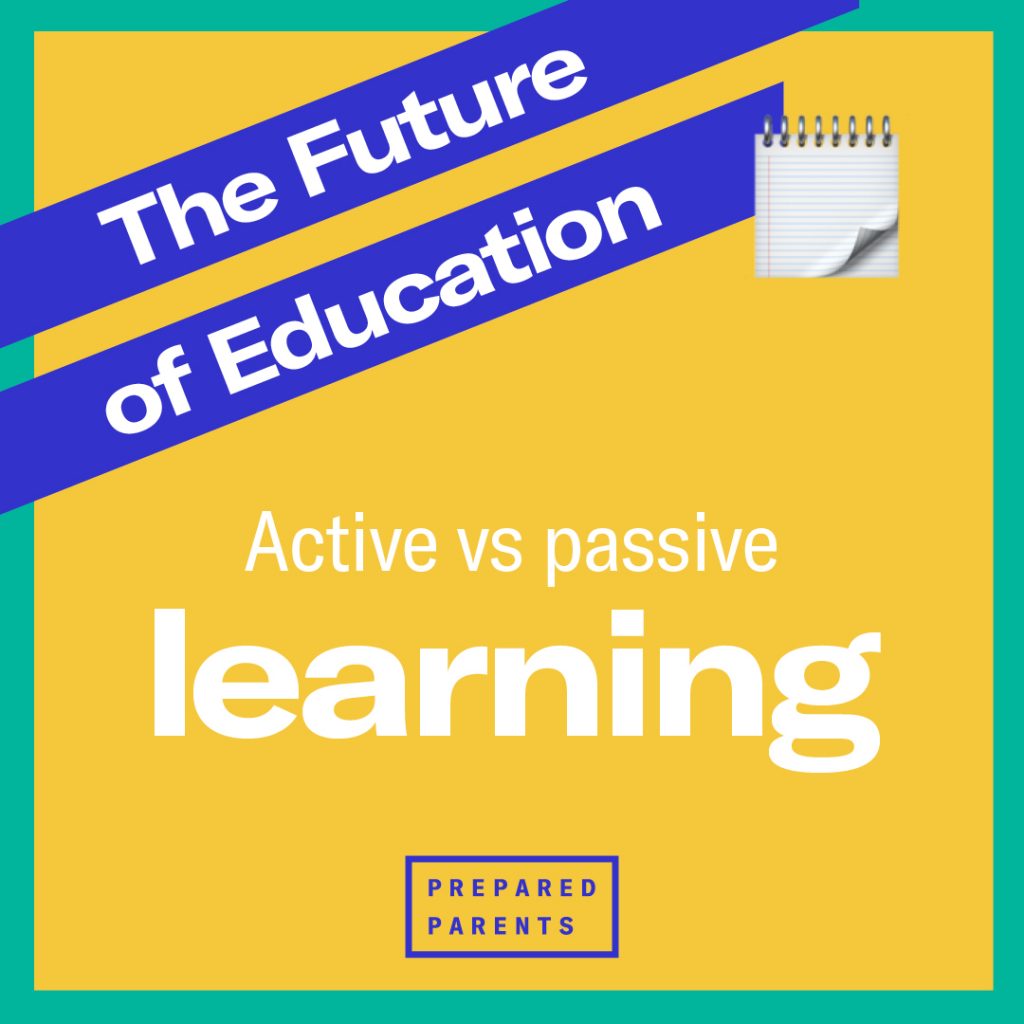
When you were at school, you read a bunch of textbooks, did worksheets, and took tests. Maybe you enjoyed history and loathed chemistry. But what if you had actually liked chemistry and chose to actively pursue it? What would your life look like now?
Kids learn best by actively engaging in their interests and applying what they know to real-life problems. But instead, many kids get to use textbooks.
The difference between how kids are learning in Zoom classrooms and some real classrooms when school’s open and how they actually learn best is passive vs. active learning.
- As passive learners, students do nothing but listen or absorb information as it is relayed or fed to them in the form of lectures, assigned readings, and workbooks. Passive learning promotes defining, describing, listening, and writing skills. But, it can disempower students and encourage convergent thinking (there is only one right solution).
- As active learners, students learn through discussion and collaboration, critical thinking, problem-solving, and connecting the dots between learning and the real-world through hands-on project-based learning. Active learning is how we learn best and it encourages divergent thinking (big picture thinking that develops various solutions to a topic).
“Answering textbook questions and worksheet questions encourages a rule-following approach to taking in information and spitting it back out. It trains kids to do what they’re told when they’re told and how they’re told…”
-Diane Tavenner
CEO of Summit Public Schools, Author of Prepared Class Disrupted Podcast
Employers look for creative problem-solvers to keep up with the rapid pace of change and innovation. Unfortunately, our public schools are just not training our kids to be creative, divergent thinkers. Instead, we propose a combination of passive learning—e.g., to teach structural rules and formulas—and active learning, where for example, kids are encouraged to “intern” on real life projects and obtain feedback from peers and parents/teachers alike.
The truth is that curricula and textbooks are approved by committee, and innovative new platforms of instruction are seldom able to get facetime with these committees. As for those workbooks that kids are constantly being asked to work on, it turns out at least one of the reasons they’re in such broad use is that publishers simply make more money from workbooks, so that’s the resource they push the most. You can listen to more about this here—it’s fascinating.
“There’s a famous saying in publishing, which breaks my heart, ‘I don’t make textbooks for children because children don’t buy textbooks. I don’t make textbooks for teachers because teachers don’t buy textbooks. I make textbooks for committees because committees buy textbooks.”
Larry Berger
CEO of Amplify
In a classroom or at home, active learning starts with these questions:
- What interests does my kid have?
- Will this activity spark their interest and engage them?
- Will they want to discuss it with me during or after, or with their friend?
- Am I getting them to think divergently—i.e., are they using creative problem-solving?
- Is this getting my kid to think critically and synthesize what they know about a subject? In other words, are they using higher-order thinking?
- Would I have fun doing this activity, if I were my kid?
Start with these 4 steps:
- Discover or confirm what sparks your kid’s interest: What do you notice your kid doing that seems to capture their attention and why? For a kid who likes cooking, what’s the ING they like best: is it planning, following a recipe, or improvising? Read more here on ways to spark your kid’s interest.
- Make it a real-word learning moment: We are hard-wired to learn by interacting with the world around us. Neuroscientists call it the perception-action cycle. Kids are more motivated and retain information longer when they see how something is connected to real-life situations. Everything we do at home can become a hands-on learning experience. The key is to turn them into projects.
- Give feedback: Giving feedback explicitly related to the learning goal is key. Some pro-tips:
- Target the activity—e.g., “you’ve done an amazing job supporting your experiment with evidence” instead of “you’re a great analytical thinker.”
- Be specific—e.g., “How about we review the difference between X and Y next time?” instead of “Try harder next time.”
- Provide feedback in a timely manner—e.g., “Ok, that didn’t work as we expected, perhaps we’ll save more time to accomplish this next time,” instead of expecting your kid to figure it out on their own.
- Focus on the process, rather than the result—e.g., “Did this strategy work?” vs. “You didn’t do that well.”
- Reflect together: Be sure to set time aside, in the end, to ask how did it go? It’s in these moments of reflection that growth takes place—you realize what’s working, what’s not, and what to do differently next time. Open-ended questions are a great way to have a reflective conversation.
